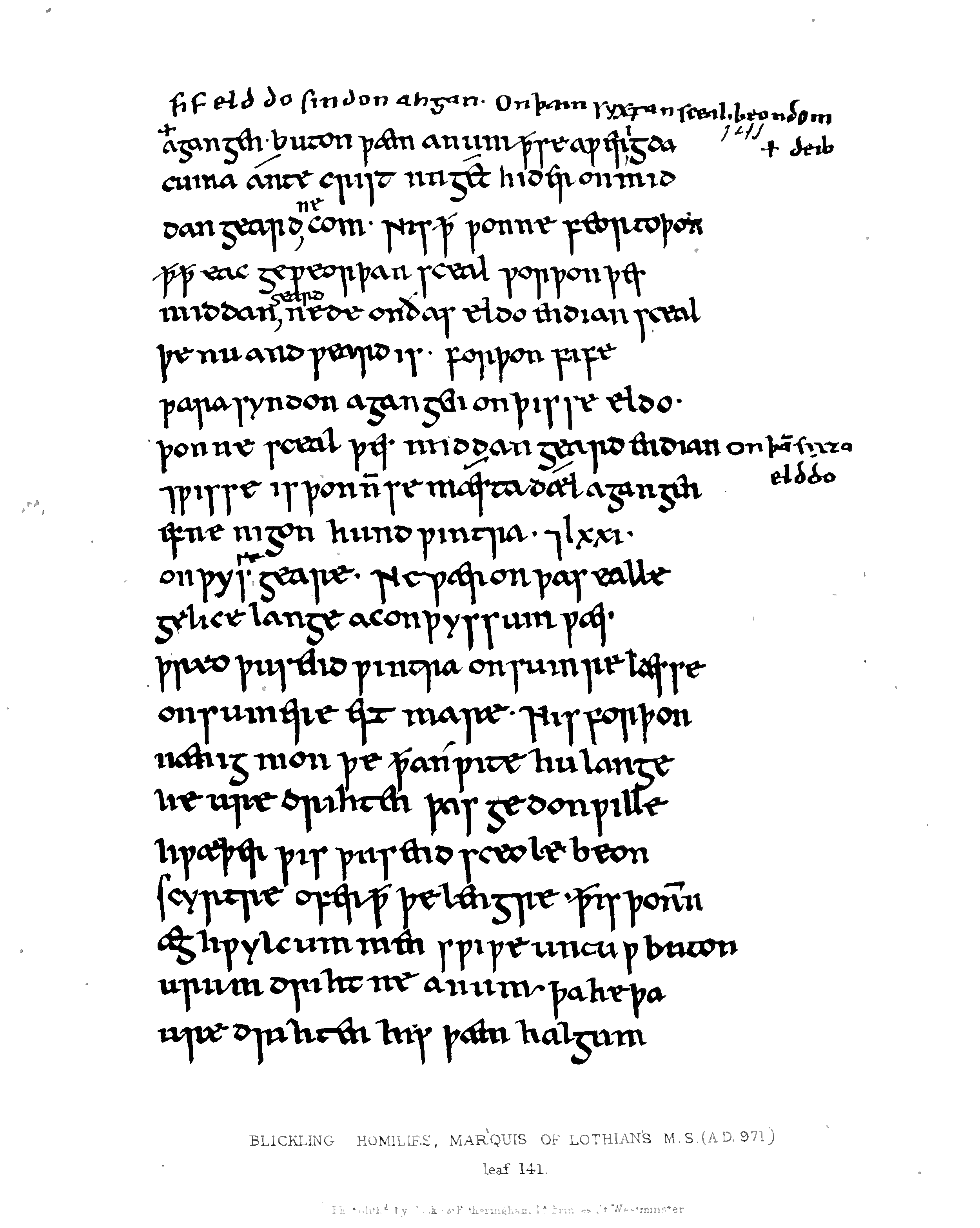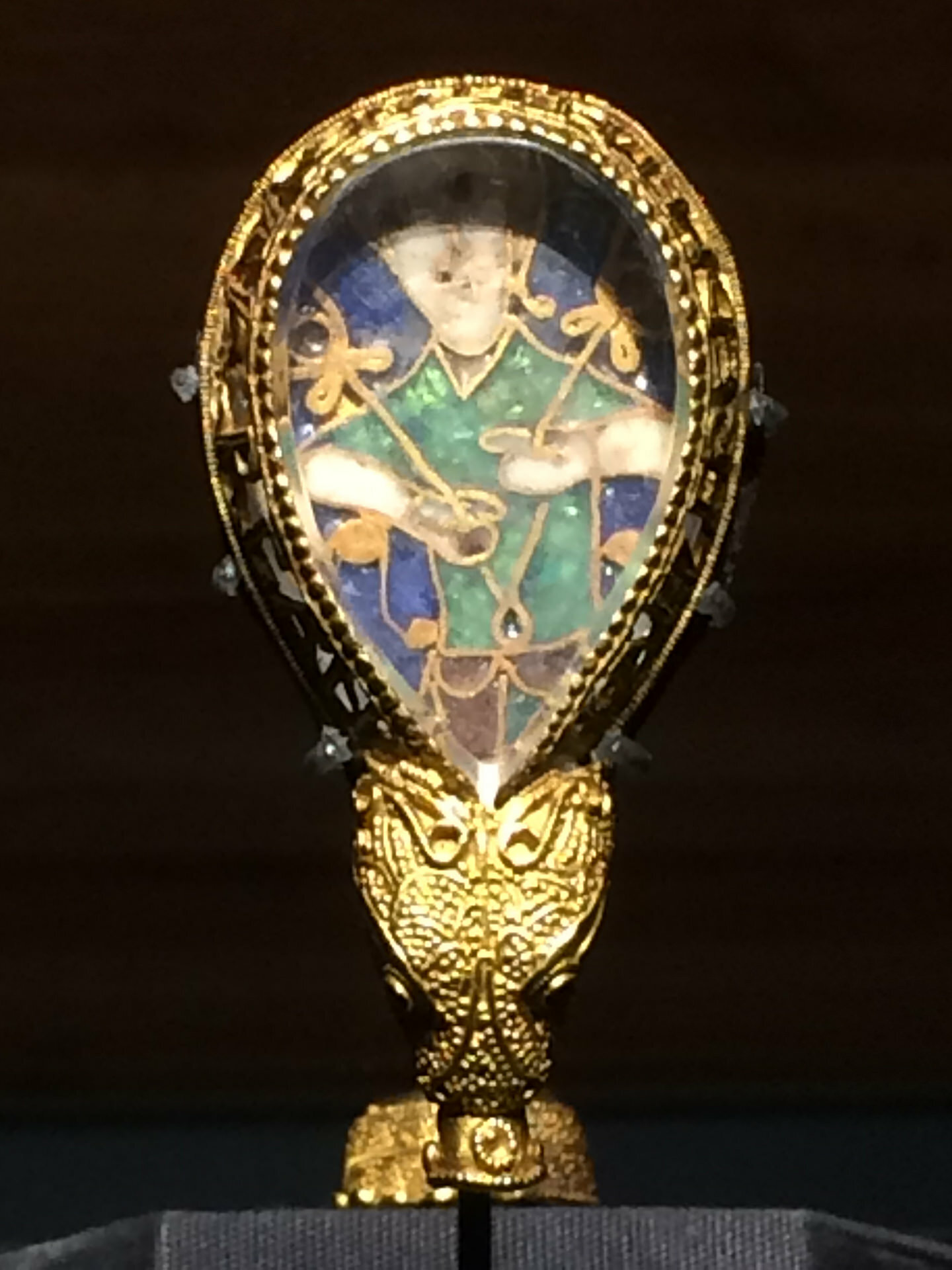|
Early English Text Society
The Early English Text Society (EETS) is a text publication society founded in 1864 which is dedicated to the editing and publication of early English texts, especially those only available in manuscript. Most of its volumes contain editions of Middle English or Old English texts. It is known for being the first to print many important English manuscripts, including Cotton Nero A.x, which contains '' Pearl'', '' Sir Gawain and the Green Knight'', and other poems. History The Society was founded in England in 1864 by Frederick James Furnivall. Its stated goal was "on the one hand, to print all that is most valuable of the yet unprinted in English, and, on the other, to re-edit and reprint all that is most valuable in printed English books, which from their scarcity or price are not within the reach of the student of moderate means." As of 2020, the Society had published 354 volumes in its Original Series; 126 volumes in its Extra Series, published between 1867 and 1935, com ... [...More Info...] [...Related Items...] OR: [Wikipedia] [Google] [Baidu] |
Text Publication Society
A text publication society is a learned society which publishes (either as its sole function, or as a principal function) scholarly editions of old works of historical or literary interest, or archival documents. In addition to full texts, a text publication society may publish translations, calendars and indexes. Members of the society (private individuals or institutions) pay an annual subscription, in return for which they either automatically receive a copy of each volume as it is published, or (as in the case of, for example, the Royal Historical Society) are eligible to purchase volumes at favourable members' rates. Some societies attempt to keep to a regular cycle of publishing (generally one volume per year, as in the case of the London Record Society and the Canterbury and York Society; the Royal Historical Society, exceptionally, aims for two volumes per year). Others, however, publish on an irregular and occasional basis, as the completion of editorial work allows. Volume ... [...More Info...] [...Related Items...] OR: [Wikipedia] [Google] [Baidu] |
Alfred Tennyson
Alfred Tennyson, 1st Baron Tennyson (6 August 1809 – 6 October 1892) was an English poet. He was the Poet Laureate during much of Queen Victoria's reign. In 1829, Tennyson was awarded the Chancellor's Gold Medal at Cambridge for one of his first pieces, "Timbuktu". He published his first solo collection of poems, '' Poems, Chiefly Lyrical'', in 1830. "Claribel" and "Mariana", which remain some of Tennyson's most celebrated poems, were included in this volume. Although described by some critics as overly sentimental, his verse soon proved popular and brought Tennyson to the attention of well-known writers of the day, including Samuel Taylor Coleridge. Tennyson's early poetry, with its medievalism and powerful visual imagery, was a major influence on the Pre-Raphaelite Brotherhood. Tennyson also excelled at short lyrics, such as " Break, Break, Break", "The Charge of the Light Brigade", " Tears, Idle Tears", and " Crossing the Bar". Much of his verse was based on classical m ... [...More Info...] [...Related Items...] OR: [Wikipedia] [Google] [Baidu] |
Learned Societies Of The United Kingdom
Learning is the process of acquiring new understanding, knowledge, behaviors, skills, values, attitudes, and preferences. The ability to learn is possessed by humans, animals, and some machines; there is also evidence for some kind of learning in certain plants. Some learning is immediate, induced by a single event (e.g. being burned by a hot stove), but much skill and knowledge accumulate from repeated experiences. The changes induced by learning often last a lifetime, and it is hard to distinguish learned material that seems to be "lost" from that which cannot be retrieved. Human learning starts at birth (it might even start before in terms of an embryo's need for both interaction with, and freedom within its environment within the womb.) and continues until death as a consequence of ongoing interactions between people and their environment. The nature and processes involved in learning are studied in many established fields (including educational psychology, neuropsycholog ... [...More Info...] [...Related Items...] OR: [Wikipedia] [Google] [Baidu] |
1864 Establishments In England
Events January–March * January 13 – American songwriter Stephen Foster ("Oh! Susanna", "Old Folks at Home") dies aged 37 in New York City, leaving a scrap of paper reading "Dear friends and gentle hearts". His parlor song "Beautiful Dreamer" is published in March. * January 16 – Denmark rejects an Austrian-Prussian ultimatum to repeal the Danish Constitution, which says that Schleswig-Holstein is part of Denmark. * January 21 – New Zealand Wars: The Tauranga campaign begins. * February – John Wisden publishes '' The Cricketer's Almanack for the year 1864'' in England; it will go on to become the major annual cricket reference publication. * February 1 – Danish-Prussian War (Second Schleswig War): 57,000 Austrian and Prussian troops cross the Eider River into Denmark. * February 15 – Heineken brewery founded in Netherlands. * February 17 – American Civil War: The tiny Confederate hand-propelled submarine '' H ... [...More Info...] [...Related Items...] OR: [Wikipedia] [Google] [Baidu] |
Medieval Literature
Medieval literature is a broad subject, encompassing essentially all written works available in Europe and beyond during the Middle Ages (that is, the one thousand years from the fall of the Western Roman Empire ca. AD 500 to the beginning of the Renaissance in the 14th, 15th or 16th century, depending on country). The literature of this time was composed of religious writings as well as secular works. Just as in modern literature, it is a complex and rich field of study, from the utterly sacred to the exuberantly profane, touching all points in-between. Works of literature are often grouped by place of origin, language, and genre. Languages Outside of Europe, medieval literature was written in Ethiopic, Syriac, Coptic, Japanese, Chinese, and Arabic, among many other languages. In Western Europe, Latin was the common language for medieval writing, since Latin was the language of the Roman Catholic Church, which dominated Western and Central Europe, and since the Church ... [...More Info...] [...Related Items...] OR: [Wikipedia] [Google] [Baidu] |
Book Publishing Companies Of The United Kingdom
A book is a medium for recording information in the form of writing or images, typically composed of many pages (made of papyrus, parchment, vellum, or paper) bound together and protected by a cover. The technical term for this physical arrangement is '' codex'' (plural, ''codices''). In the history of hand-held physical supports for extended written compositions or records, the codex replaces its predecessor, the scroll. A single sheet in a codex is a leaf and each side of a leaf is a page. As an intellectual object, a book is prototypically a composition of such great length that it takes a considerable investment of time to compose and still considered as an investment of time to read. In a restricted sense, a book is a self-sufficient section or part of a longer composition, a usage reflecting that, in antiquity, long works had to be written on several scrolls and each scroll had to be identified by the book it contained. Each part of Aristotle's ''Physics'' is called ... [...More Info...] [...Related Items...] OR: [Wikipedia] [Google] [Baidu] |
Aelfric Society
The Aelfric Society (Ælfric Society) was a text publication society founded in London, England, and active from 1842 to 1856, which published the Homilies of Ælfric of Eynsham (perhaps Archbishop of Canterbury, during 996–1006)"Aelfric (c.955-1020)", Medievalchurch.org.uk, webMC-Aelfric and other works by Anglo-Saxon writers. It is also known as ''Aelfric Society Publications''. The Ælfric Society was named in honor of Ælfric of Eynsham, a Benedictine monk who wrote a Saxon grammar and dictionary (glossary). He had also translated a number of homilies and the Heptateuch into Old English. For the society, the Anglo-Saxon scholar Benjamin Thorpe (1782–1870) edited the homilies, during 1844–1846. Ælfric's Saxon grammar and glossary had been printed, nearly two hundred years earlier, at Oxford in 1639 and 1698. The Edinburgh branch of the society operated from 87 Princes Street and was run by T G Stevenson.Edinburgh Post Office Directory 1845 __TOC__ Publi ... [...More Info...] [...Related Items...] OR: [Wikipedia] [Google] [Baidu] |
Alfred Jewel
The Alfred Jewel is a piece of Anglo-Saxon goldsmithing work made of enamel and quartz enclosed in gold. It was discovered in 1693, in North Petherton, Somerset, England and is now one of the most popular exhibits at the Ashmolean Museum in Oxford. It has been dated to the late 9th century, in the reign of Alfred the Great, and is inscribed , meaning "Alfred ordered me made". The jewel was once attached to a rod, probably of wood, at its base. After decades of scholarly discussion, it is now "generally accepted" that the jewel's function was to be the handle for a pointer stick for following words when reading a book. It is an exceptional and unusual example of Anglo-Saxon jewellery. Function and commission Although the function of the Jewel is not absolutely certain, it is believed to have been the handle or terminal for one of the precious "aestels" or staffs that Alfred the Great is recorded as having sent to each bishopric along with a copy of his translation of Pope Gr ... [...More Info...] [...Related Items...] OR: [Wikipedia] [Google] [Baidu] |
Anne Hudson (academic)
Anne Mary Hudson, (28 August 1938 – 8 December 2021) was a British literary historian and academic. She was a Fellow of Lady Margaret Hall, Oxford from 1963 to 2003, and Professor of Medieval English at the University of Oxford from 1989 to 2003. Early life and education Hudson was born on 28 August 1938. She was educated at Dartford Grammar School for Girls, an all-girls state grammar school in Dartford, Kent. From 1957 to 1960, she studied English at St Hugh's College, Oxford, graduating with a first class Bachelor of Arts (BA) degree; as per tradition, her BA was promoted to a Master of Arts (MA Oxon) degree. She also undertook postgraduate research at Oxford in relation to Robert of Gloucester's English chronicle, and completed her Doctor of Philosophy (DPhil) degree in 1964.'HUDSON, Prof. Anne Mary', '' Who's Who 2017'', A & C Black, an imprint of Bloomsbury Publishing plc, 2017; online edn, Oxford University Press, 2016; online edn, Nov 201accessed 22 Nov 201 ... [...More Info...] [...Related Items...] OR: [Wikipedia] [Google] [Baidu] |
Richard Chenevix Trench
Richard Chenevix Trench (Richard Trench until 1873; 9 September 1807 – 28 March 1886) was an Anglican archbishop and poet. Life He was born in Dublin, Ireland, the son of Richard Trench (1774–1860), barrister-at-law, and the Dublin writer Melesina Chenevix (1768–1827). His elder brother was Francis Chenevix Trench. He went to school at Harrow, and graduated from Trinity College, Cambridge in 1829. In 1830 he visited Spain. While incumbent of Curdridge Chapel near Bishop's Waltham in Hampshire, he published (1835) ''The Story of Justin Martyr and Other Poems'', which was favourably received, and was followed in 1838 by ''Sabbation, Honor Neale, and other Poems'', and in 1842 by ''Poems from Eastern Sources''. These volumes revealed the author as the most gifted of the immediate disciples of Wordsworth, with a warmer colouring and more pronounced ecclesiastical sympathies than the master, and strong affinities to Alfred Lord Tennyson, John Keble and Richard Monckto ... [...More Info...] [...Related Items...] OR: [Wikipedia] [Google] [Baidu] |








.jpg)